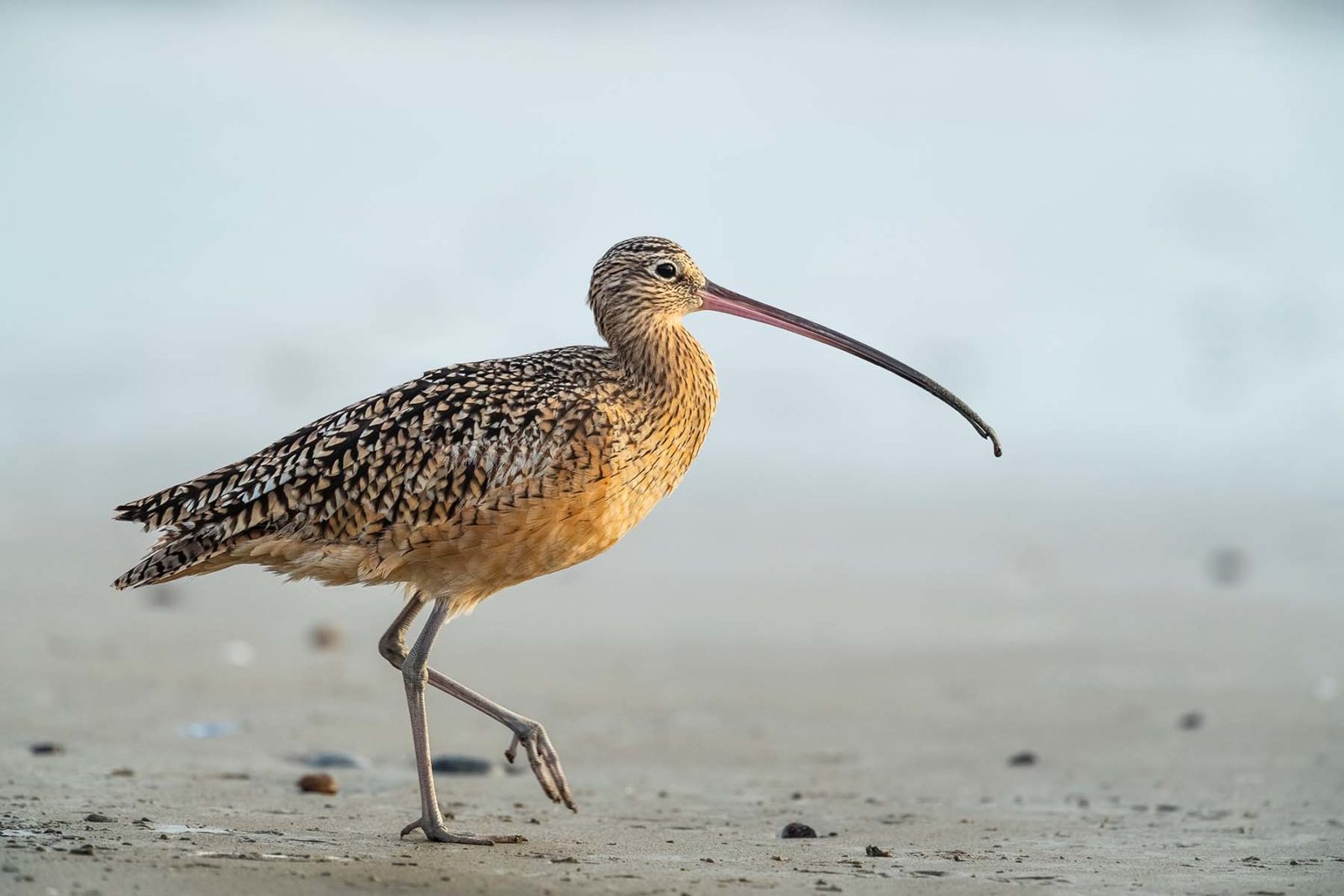
The long-billed curlew, North America’s largest shorebird, wades through the shallow waters near Bolinas Lagoon in Marin County. As it probes for food, its narrow, arcing bill, at least four times the length of its own head, dips needle-like into the silt and water ahead, and a gentle breeze lifts its speckled, tawny feathers
Until recently, coastal California’s long-billed curlews, a beloved and relatively common sight along the Shoreline Highway in the fall and winter, posed a mystery for the scientists who study them: where do they go when they’re not here?
Scientists had tracked curlews from their breeding grounds in the American West, Intermountain West, British Columbia, and New Mexico to their wintering grounds in California’s Central and Imperial Valleys, Baja, Texas, and Mexico. But until 2020, the origin of the more than 3,000 curlews that winter annually along the California coast represented “the last piece of the puzzle” for understanding the species’ continental migration pattern, says Autumn-Lynn Harrison, the program manager for the Smithsonian’s Migratory Connectivity Project.
In February 2020, Audubon Canyon Ranch interim Executive Director Nils Warnock, Intermountain Bird Observatory Research Director Jay Carlisle, and other scientists spent a week capturing and tagging two adult curlews, one female and one male, along the shoreline of Limantour Beach in the Point Reyes National Seashore. Now, the data collected from these transmitters is helping to answer the questions that had previously eluded researchers.
The curlews left California in April 2020 and found mates in southwestern Idaho, roughly 200 miles apart from one another, Warnock says. In early July, both returned to Bolinas Lagoon for the winter, occasionally venturing back to Limantour Beach. Both took off again in April 2021, bound for their Idaho breeding grounds once more. At this point, the female either died or lost her transmitter, but the male bred and returned to winter again at Bolinas Lagoon, where he still sends back location information every 36 hours thanks to a “ring-box”–size, solar-powered transmitter safely harnessed to his back.
Curlews wintering in the Central Valley can often be seen “flipping up cow poop” in search of insects, Warnock says, while the curlews of the California coast spend their winters perusing coastal mudflats, unearthing crabs and worms, avoiding predators such as peregrine falcons, molting, and preening. Curlews can spend more than nine months in California, often sleeping in groups at night, then dispersing to feed individually.
Researchers from across North America now compile their data to monitor and track curlews, part of an effort to construct a single range-wide migration map for the species. Understanding the ways that threats on curlew breeding grounds might connect to threats on wintering grounds across country and state borders will also help contribute to what Carlisle calls “full annual cycle conservation.”
“We can maybe pinpoint where conservation efforts are needed,” he says. “We’ve all had our separate projects, but then we’ve found each other and realized, hey, there’s more power with all of our data together.”
Curlews face an uncertain future of limited flood-irrigated habitats in water-stressed states and poaching in recreationally hunted grasslands in parts of Idaho. “Hopefully, in the face of climate change and a growing human population, these [research] efforts can help preserve some of the most important habitats to allow some species to survive with us,” Carlisle says.
Collaborative tracking efforts have helped advance curlew conservation, allowing researchers to better understand where curlews are flying during their seasonal migrations—a major feat, considering that curlews can fly hundreds of miles in a single night and are difficult to tag.
“It’s like when you’re working on a real puzzle, and then you get to a piece that’s really hard,” the Smithsonian’s Harrison says. “That’s when you enlist other people to help you fit in those last pieces, and that’s what we did. We had these tricky pieces that we really needed everyone’s help to figure out.”




